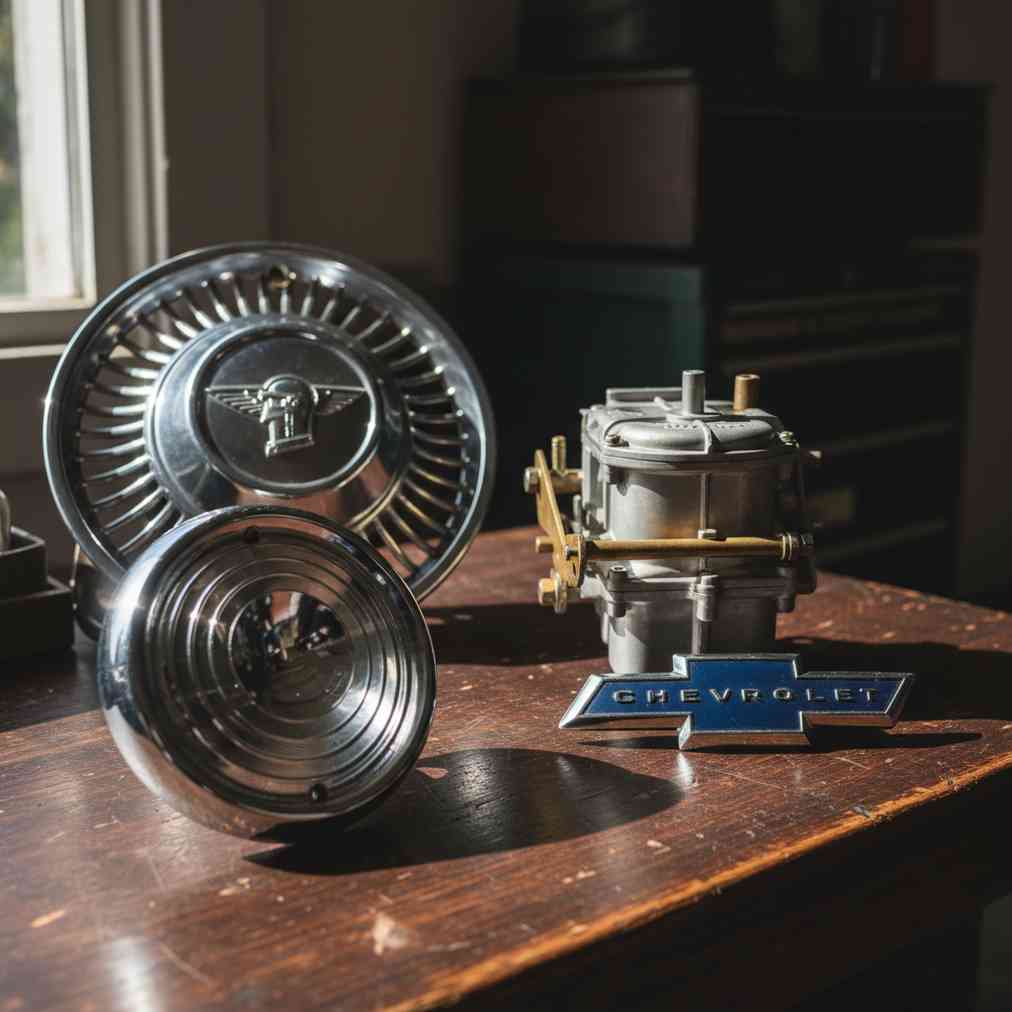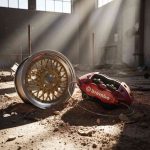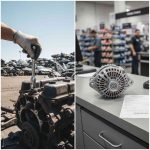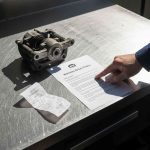Understanding the Value of Salvage Yards for Classic Car Restoration
For classic car enthusiasts, finding authentic parts can be the difference between a successful restoration and a costly compromise. Salvage yards represent some of the most valuable resources for sourcing rare classic car parts, offering original equipment manufacturer (OEM) components that are no longer in production. These automotive treasure troves contain everything from vintage engines and transmissions to hard-to-find trim pieces and body panels.
The beauty of salvage yards lies in their ability to preserve automotive history. When manufacturers discontinue parts for older vehicles, these yards become the primary source for authentic restoration components. Whether you’re searching for a specific carburetor from a 1960s muscle car or unique chrome trim from a classic sedan, salvage yards offer possibilities that simply don’t exist in new parts catalogs.
Strategic Locations for Finding Classic Car Parts
Success in finding rare parts depends heavily on knowing where to look. The landscape of salvage yards varies significantly, and understanding these different types can dramatically improve your search results.
Specialized Classic Car Salvage Yards
Specialized vintage salvage yards focus exclusively on classic and antique vehicles. These establishments, such as Cooley’s Scrap & Salvage, maintain curated inventories of classic vehicles and parts. Their expertise extends beyond simple storage – they often understand the value and rarity of specific components, making them invaluable partners in restoration projects.
These yards typically organize their inventory by make, model, and era, making searches more efficient. Staff members often possess deep knowledge about classic cars and can guide you toward compatible parts or suggest alternatives you might not have considered.
General Salvage Yards with Hidden Gems
Don’t overlook general junkyards near me when searching for classic parts. These larger operations process vehicles of all ages and may contain unexpected treasures. The key is persistence and regular visits, as inventory changes constantly when new vehicles arrive.
Many general yards operate on a “pull-and-pay” basis, allowing you to remove parts yourself with basic tools. This hands-on approach often results in significant cost savings and gives you complete control over the removal process.
Digital Resources and Online Communities
Modern technology has revolutionized parts searching. Many salvage yards now maintain online inventories, and platforms dedicated to classic cars connect buyers with sellers worldwide. Online marketplaces and forums have become essential tools for locating rare components.
Professional “pickers” who specialize in finding hard-to-find auto parts often use these digital channels to reach collectors globally. These experts understand market values and can source specific parts on commission.
The Economics of Buying Used Classic Car Parts
Understanding the financial advantages of purchasing used parts helps justify the time investment required for successful salvage yard hunting.
| Benefit | Description | Typical Savings |
|---|---|---|
| Cost Reduction | Used parts cost significantly less than reproduction or new alternatives | 50-80% less than new |
| OEM Authenticity | Original manufacturer parts maintain vehicle authenticity | Immeasurable for collectors |
| Availability | Access to discontinued parts unavailable elsewhere | Often the only option |
| Environmental Impact | Recycling reduces waste and conserves resources | Positive environmental benefit |
The cost advantage becomes even more significant for rare vehicles where reproduction parts command premium prices or simply don’t exist. For many classic car owners, salvage yards represent the only financially viable path to authentic restoration.
Complete Inspection Guide for Used Classic Car Parts
Thorough inspection is crucial when evaluating used parts. A systematic approach ensures you identify potential issues before purchase and avoid costly mistakes during installation.
Visual Assessment Framework
- Part Number Verification: Cross-reference stamped numbers with factory manuals or online databases
- Manufacturer Markings: Look for original logos, casting marks, and date codes
- Material Quality Assessment: Evaluate metal thickness, finish quality, and construction techniques
- Structural Integrity Check: Examine for cracks, excessive wear, rust penetration, or damage
- Completeness Verification: Ensure all sub-components, mounting hardware, and brackets are present
Functionality Testing Procedures
For mechanical components, functional testing can reveal hidden problems that visual inspection might miss. This is particularly important for complex parts like transmissions, engines, or electrical components.
- Moving Parts Assessment: Test all mechanical functions within reasonable limits
- Wear Pattern Analysis: Examine wear patterns for signs of abuse or improper maintenance
- Electrical Component Testing: Use basic multimeter tests for electrical parts when possible
- Fluid Contamination Check: Look for signs of contaminated fluids in sealed components
Authenticating Original Equipment Manufacturer Parts
Verifying authenticity is crucial for classic car restoration, especially when maintaining historical accuracy affects vehicle value. Original parts authentication involves multiple verification methods that go beyond simple visual inspection.
“Salvage yards are often gold mines for older cars, containing original parts such as engines, transmissions, body panels, and trim pieces that may be hard to find elsewhere.”
Classic Car Restoration Expert
Documentation and Provenance Research
Proper documentation significantly increases confidence in part authenticity. While salvage yards rarely provide extensive paperwork, any available information can be valuable.
- Service Records: Any maintenance history can indicate care level and authenticity
- Original Packaging: Rarely found but highly valuable for verification
- Seller Reputation: Research the yard’s reputation and expertise with classic vehicles
- Chain of Custody: Understanding where and how the yard acquired the parts
Advanced Authentication Techniques
For high-value or critical components, advanced authentication methods may be warranted. These techniques are typically employed by professional restorers or for concours-level restorations.
| Method | Application | Reliability |
|---|---|---|
| Font Analysis | Stamped numbers and markings | High for dated components |
| Material Composition | Metal alloy verification | Very high for critical parts |
| Manufacturing Technique | Casting marks and tool signatures | High for experienced evaluators |
| Expert Consultation | Specialist knowledge and experience | Depends on expert credibility |
Locating Donor Vehicles for Multiple Parts
Sometimes the most efficient approach involves finding a complete donor vehicle rather than searching for individual parts. This strategy works particularly well when multiple components are needed or when parts availability is extremely limited.
Established operations like Kessler’s Auto Salvage in Wisconsin, with over 30 years of operation, often maintain complete classic vehicles that serve as parts donors. These long-established yards understand the value of keeping vehicles intact until specific parts are needed.
Advantages of Donor Vehicle Strategy
- Multiple Parts Availability: Access to numerous components from a single source
- Compatibility Assurance: All parts guaranteed to work together
- Cost Efficiency: Often more economical than purchasing parts individually
- Original Configuration: Parts maintain their original relationships and settings
- Future Parts Security: Reserve additional parts for future needs
Modern Technology in Salvage Yard Operations
The salvage yard industry has embraced digital transformation, making parts location more efficient than ever before. These technological advances benefit both yard operators and customers seeking specific components.
Digital Inventory Systems
Computerized inventory management allows yards to track thousands of parts across multiple vehicles. Many operations now photograph parts and maintain detailed databases that customers can search online. This technology is particularly valuable for classic car parts, where visual verification is crucial.
Advanced systems can track part conditions, locations within the yard, and even maintain waiting lists for specific components. When a desired part arrives, customers receive automated notifications.
Online Marketplace Integration
Many salvage yards now list inventory on major online platforms, expanding their reach to national and international markets. This development is particularly beneficial for classic car enthusiasts, as rare parts can now be located regardless of geographic constraints.
Social media platforms and specialized forums have also become important channels for connecting buyers with sellers. These communities often share information about new arrivals and rare finds, creating networks of enthusiasts who help each other locate needed parts.
Building Relationships with Salvage Yard Professionals
Successful parts hunting often depends more on relationships than on single transactions. Building rapport with salvage yard operators and staff can provide significant advantages in locating rare components.
Establishing Yourself as a Serious Customer
- Regular Communication: Maintain contact even when not actively searching
- Fair Dealing: Pay promptly and treat staff respectfully
- Specific Requests: Provide detailed part descriptions and contact information
- Flexibility: Be willing to consider alternative solutions or timing
- Referrals: Refer other customers and acknowledge good service
Yard operators often remember customers who are serious about their projects and easy to work with. This relationship can result in first access to rare parts, better pricing, and valuable advice about restoration approaches.
Safety Considerations When Visiting Salvage Yards
Salvage yards present unique safety challenges that require preparation and awareness. Understanding these risks and taking appropriate precautions ensures productive and safe parts hunting expeditions.
| Safety Category | Specific Risks | Prevention Measures |
|---|---|---|
| Physical Hazards | Sharp metal, unstable stacks, heavy parts | Safety glasses, gloves, sturdy footwear |
| Chemical Exposure | Fluids, battery acid, asbestos in older cars | Protective clothing, hand washing, ventilation masks |
| Tool Safety | Improper tool use, equipment failure | Quality tools, proper training, backup assistance |
| Environmental | Weather exposure, uneven surfaces | Appropriate clothing, awareness of conditions |
Essential Tools for Salvage Yard Success
Preparation is key to successful salvage yard visits. Having the right tools and supplies ensures you can properly evaluate and remove parts when opportunities arise.
Basic Tool Kit Requirements
- Hand Tools: Complete socket and wrench sets, screwdrivers, pliers
- Cutting Tools: Reciprocating saw, angle grinder with cutting wheels
- Measuring Equipment: Tape measure, calipers, thread gauges
- Documentation: Camera, notebook, part number references
- Safety Gear: Safety glasses, gloves, steel-toed boots
- Transportation: Dolly, straps, protective padding for delicate parts
Quality tools make the difference between successful part removal and damaged components. Investing in proper equipment pays dividends in both safety and effectiveness.
Timing Strategies for Maximum Success
Understanding salvage yard operations and timing your visits strategically can significantly improve your chances of finding desired parts.
Optimal Visit Timing
- Early Week Visits: Monday and Tuesday often have new weekend arrivals
- Seasonal Considerations: Spring brings more classic car arrivals as owners clean garages
- Weather Impact: Post-storm periods may bring flood-damaged classics with salvageable parts
- Economic Factors: Economic downturns sometimes bring rare vehicles to yards
- Event Timing: Visit before major car shows when demand increases
Alternative Selling Opportunities
While searching for parts, you may encounter opportunities to sell a junk car or acquire donor vehicles for your own projects. Understanding the full cycle of salvage yard operations can lead to additional opportunities and cost savings.
Many successful classic car restorers maintain relationships that work both ways – selling unwanted vehicles and parts while purchasing what they need. This balanced approach often results in more favorable pricing and better access to rare components.
Future Trends in Classic Car Parts Sourcing
The landscape of classic car parts sourcing continues to evolve, driven by technology, changing demographics, and market dynamics.
Emerging Developments
- 3D Printing Technology: Reproduction of rare plastic and metal components
- Global Marketplace Expansion: International shipping making worldwide sourcing practical
- AI-Powered Matching: Automated systems connecting buyers with available parts
- Blockchain Authentication: Verified provenance tracking for high-value components
- Augmented Reality Applications: Virtual fitting and compatibility verification
These developments promise to make rare parts more accessible while maintaining the authenticity that classic car enthusiasts demand. However, the fundamental value of salvage yards as repositories of original equipment will likely remain unchanged.
Conclusion: Mastering the Art of Salvage Yard Success
Finding rare classic car parts from salvage yards requires patience, preparation, and persistence. Success depends on understanding yard operations, building relationships, using proper evaluation techniques, and staying current with technological developments in the industry.
The most successful parts hunters combine traditional hands-on approaches with modern digital tools. They understand that each yard visit is both a treasure hunt and a learning opportunity. Whether you’re searching for a specific component or building a comprehensive parts inventory, salvage yards remain an essential resource for maintaining automotive history.
Remember that restoration is a journey, not a destination. The parts you find today may contribute to preserving automotive heritage for future generations, making your efforts part of a larger historical preservation effort that extends far beyond individual restoration projects.





Leave a Reply
You must be logged in to post a comment.